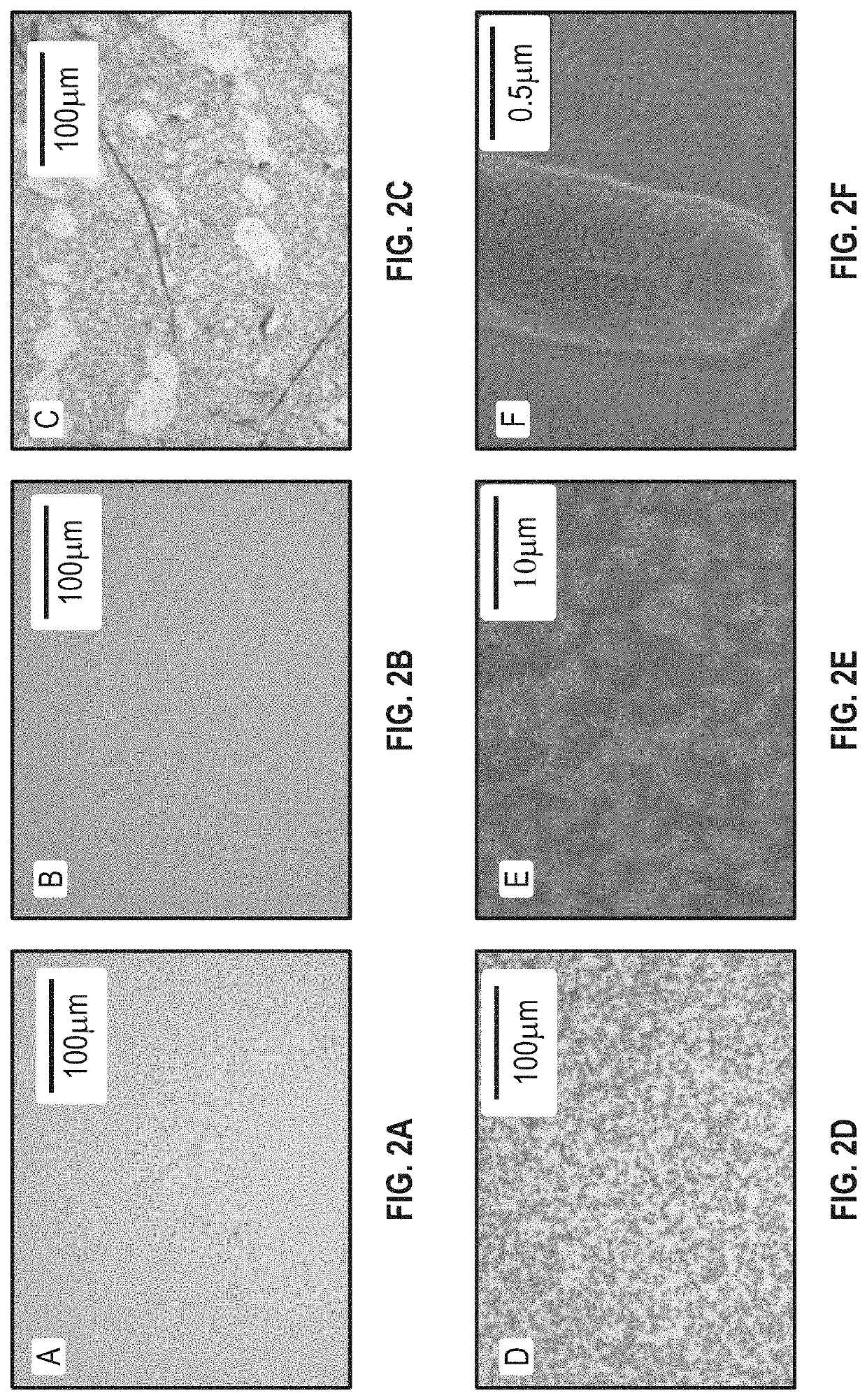Optical detection of biological components
a biological component and optical detection technology, applied in the direction of material excitation analysis, instruments, measurement devices, etc., can solve the problems of complex screening, difficult operation, and lack of mobility, and achieve the effects of convenient processing, low magnification, and convenient imag
- Summary
- Abstract
- Description
- Claims
- Application Information
AI Technical Summary
Benefits of technology
Problems solved by technology
Method used
Image
Examples
example 1 preparation
of the Substrate
[0077]A gold coated slide (Thermo Scientific Madison, Wis.) was washed with deionized water and cut into rectangular pieces (approximately 2.5 by 3.5 mm) using a glass knife and cutter to form substrate precursors. The substrate precursors were then washed with ethanol (Pharmco-aaper Chicago, Ill.) for 30 seconds and placed into 4 mL of 1 mM 3-mercaptophenylboronic acid (3-MPBA)-ethanol (AstaTech Bristol, Pa.) solution in a sterile 5 mL test tube. The test tube was put onto a shaker (speed=20 RPM) for approximately 17 hours. After 24 hours, the substrate was formed and was washed with ethanol for 20 seconds and put into a 96-well plate. 150 μL of ethanol was pipetted into each well to stabilize the substrate until use (approximately 1 hour).
example 2 bacterial detection
[0078]Water, buffering chemicals (50 mM ammonia bicarbonate), and the biological sample, were added into the vial including the substrate. The mixture was incubated for 30 minutes. The substrate was removed and rinsed with water. A smartphone including a magnification lens was positioned over the substrate and a photograph was taken.
example 3
Example 3.1 Using a High Precision Lab Microscopy
[0079]FIG. 2 shows that after bacteria cells bound to the 3-MPBA coated substrates, the bacterial cells were clearly visible under the 20× objective lens (FIG. 2D). Those black spots were confirmed as individual bacterial cells using scanning electron microscope (FIGS. 2E and 2F). When the substrates are free of coating with 3-MPBA, there were no clear black spots.
[0080]Ammonia bicarbonate was found to be helpful in this Example. As shown in FIG. 4A, bacteria suspended in water were not captured effectively compared to sodium hydroxide (FIG. 4B) and ammonia bicarbonate (both of the pH was 8.4) (FIG. 4C). This is because the boronic acid-diol reaction is more favorable in the alkaline condition. There also appears to be a noticeabble difference between sodium hydroxide and ammonia bicarbonate at the same pH. This demonstrates that ammonia bicarbonate has the ability to enhance the boronic acid-diol reaction more than just providing the...
PUM
| Property | Measurement | Unit |
|---|---|---|
| pH | aaaaa | aaaaa |
| distance | aaaaa | aaaaa |
| distance | aaaaa | aaaaa |
Abstract
Description
Claims
Application Information
 Login to View More
Login to View More - R&D
- Intellectual Property
- Life Sciences
- Materials
- Tech Scout
- Unparalleled Data Quality
- Higher Quality Content
- 60% Fewer Hallucinations
Browse by: Latest US Patents, China's latest patents, Technical Efficacy Thesaurus, Application Domain, Technology Topic, Popular Technical Reports.
© 2025 PatSnap. All rights reserved.Legal|Privacy policy|Modern Slavery Act Transparency Statement|Sitemap|About US| Contact US: help@patsnap.com



